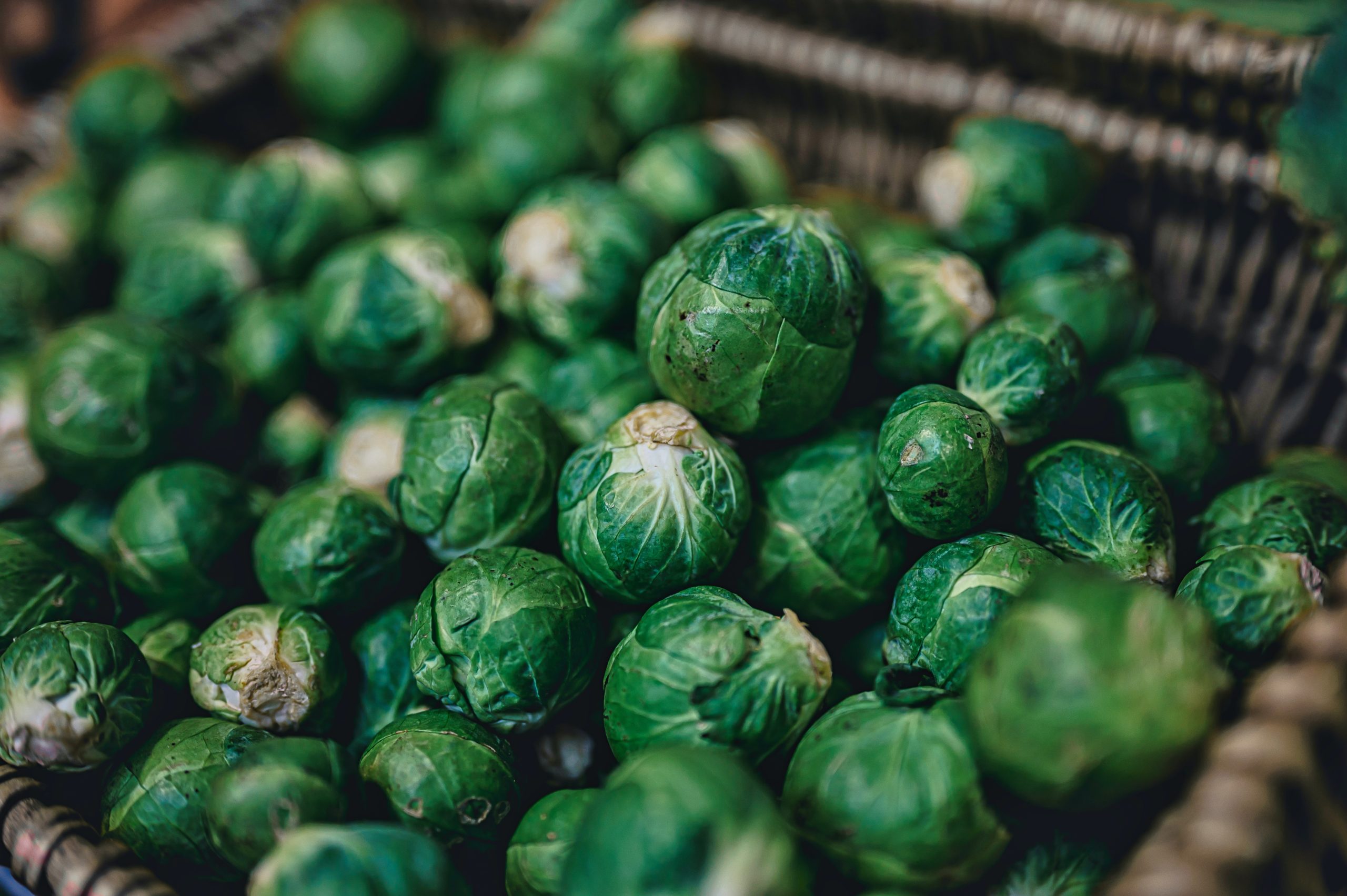
Broil ‘em, sautee ‘em, roast ‘em, steam ‘em… you can’t go wrong with brussels sprouts, no matter how you cook ‘em.
These slow growing, long-bearing veggies are in the same family as other good-for-you, cool-weather greens like cabbage, broccoli, collards, and kale.
Brussel sprouts grow best in the cool temperatures of autumn. That means planting begins now, in mid-to-late-summer.
Keep reading to learn how to grow brussels sprouts in the fall.
(Bonus: we’ve also included a couple yummy brussels sprouts recipes at the end of this guide.)
When should you plant brussels sprouts for a fall harvest?
Brussels sprouts grow best in cool weather, even tolerating a light frost.
If you live in warmer climates, plant your brussels sprouts from mid-to-late summer for a late fall/early winter harvest.
For those in colder regions where winter comes quickly and fiercely, plant brussels sprouts in spring for an early fall harvest.
Depending on the type of seed, plants mature between 3 – 6 months.
If you’re growing from seed and planting mid-summer, choose varieties like Prince Marvel, Jade Cross, and Lunet. These mature within 80 – 125 days of sowing the seeds.
Many gardeners recommend starting your seeds indoors or inside a greenhouse, since young plants can become prey to pests like slugs. Although we do not grow brussels sprouts anymore, I did start the seeds first indoors before transplanting them into the ground when they were about 6 inches tall.
And it was worth it: the brussels sprouts we grew were the BEST flavor of any I have eaten—so I definitely recommend growing them fresh yourself!
Young plants are ready to be transplanted into the garden within 4 – 6 weeks of sowing.
If you’d like to skip the seed sowing process altogether, you can purchase young plants from your local nursery to plant directly into your garden.
RELATED READING:
What do brussels sprouts require to thrive?
Spacing:
The wide leaves of brussels sprouts need room to spread. Space plants at least 18 – 24 inches apart.
The sunnier, the better. Brussels sprouts need at least 6 or more hours of sunlight per day.
Soil requirements:
Brussels sprouts need well-draining soil with pH levels of 6.8. This high pH discourages clubroot disease.
Amend your soil with plenty of nutrient-rich compost before planting.
As always, we recommend testing your soil each year before planting a garden. If you haven’t done that yet, here’s how to test your garden soil.
Water requirements:
Make sure your brussels sprouts receive between 1 – 1.5 inches water weekly, whether by rain or watering.
Mulch your soil to retain moisture and prevent weeds. This is especially helping if you’re experiencing drought conditions.
When should you harvest brussels sprouts?
Harvest when heads are about 1 – 2 inches in diameter; they should be firm and green. To remove, twist the heads until they break away from the plant. Remove any yellow leaves as you harvest the lower sprouts.
The fresher, the better: sprouts can be stored in plastic bags in the refrigerator for 1 – 2 days.
What should you do about pests?
Bugs like brussels sprouts just as much as we do, including aphids, harlequin bugs, cabbage loopers, diamondback moth, imported cabbageworm, cutworms, cabbage maggot, thrips, and webworms.
To protect from imported cabbage worms, you can cover your plants with lightweight insect barrier fabric. Do this right after planting them into the ground to keep butterflies from laying their eggs on the plants. Leave slack for plant growth.
For other pests, beneficial insects are your guardians of the garden. Read more about how beneficial insects offer pesticide-free protection to your plants.
BONUS:
2 Easy Brussels Sprouts Recipes
Now that you’ve grown ‘em… what to do with all your fresh brussels sprouts? Try these 2 easy brussels sprouts recipes!
Sauteed Brussels Sprouts
Pull out your cast iron skillet. This simple and easy Sauteed Brussels Sprouts recipe will leave your mouth watering for more.
INGREDIENTS:
- 1 pound Brussels sprouts trimmed and halved
- 2 tablespoons extra virgin olive oil
- ½ teaspoon kosher salt
- ¼ teaspoon black pepper
- 1 tablespoon balsamic vinegar or lemon juice
- 1 to 2 tablespoons raw pine nuts or chopped raw walnuts, almonds, or pecans (optional)
- Chopped fresh herbs like parsley cilantro or mint (optional)
- A handful of Parmesan feta, or goat cheese (optional)
Crispy Asian Brussels Sprouts
Put an Asian twist on your brussels sprouts with this recipe.
INGREDIENTS:
- 1 lb. fresh Brussels sprouts
- 1.5 tbsp. olive oil
- 2 tbsp reduced sodium soy sauce
- 1 tbsp honey
- 1.5 tsp rice vinegar
- 1 tsp sesame oil
- 1 tsp Asian garlic chili paste (like sambal olek, Sriracha, adjust to heat preference)
- 1/2 tsp garlic powder
- 1 Salt and pepper (as needed)
***
Happy growing—and happy cooking!

